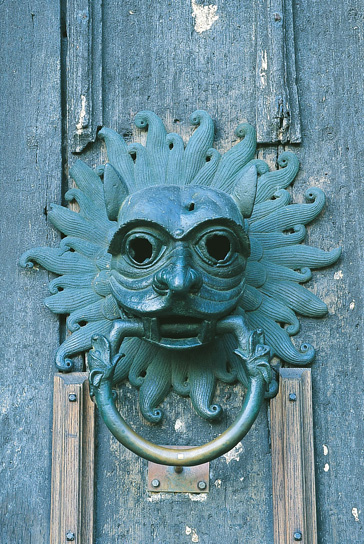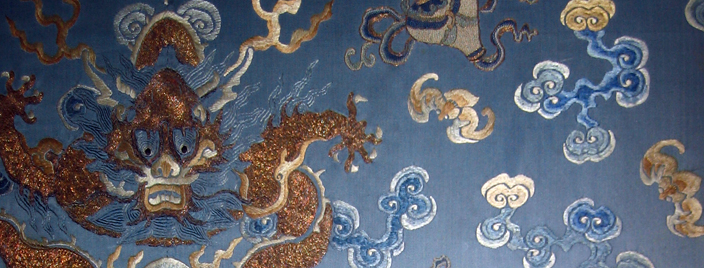
There are remarkable similarilities between Durham Cathedral's Sanctuary Knocker, and dragons that appear in Chinese art and architecture. Look at the details of the mane, for example.
How Could Chinese Dragons Have Found their Way into European Art?
Motifs often travelled from one culture to another through portable objects like ceramics, textiles, and metalware.
We know that objects did travel. For, example, the treasury of Durham Cathedral includes a "Byzantine" silk, dating from around the tenth century.
Dragons often appeared on Chinese silk, which was much coveted and came west via the silk route. The makers of the sanctuary knocker may have never seen a Chinese silk themselves, but could have been inspired by other objects that in turn, were inspired by Chinese, or eastern art.

A dragon on a nineteenth-century Chinese silk acquired by the wife of Bishop Henson around 1913. The most striking similarility between this dragon and the sanctuary knocker is the way the mane is shown.
Valuing the Exotic: An Undying tradition
We constantly pick up objects and ideas when we travel, and appreciate things that look different.
Around 1913, the wife of one of the Durham Bishops, Ella Henson, acquired a collection of Chinese art, including some textiles with dragons, and painted wallpaper now in the Dean of Durham's residence. Human nature has not changed much over the centuries - the exotic would have been just as appealing in the eleventh century, as it was in the 20th, and as it is today.

